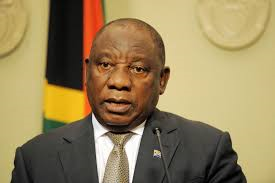President Cyril Ramaphosa has announced a set of new measures aimed at saving the economy and countering growing hunger and distress across the country amid the corona-virus outbreak.
He announced a massive R500 billion economic and social relief package to mitigate the impact of the pandemic. This amounts to around 10% of GDP.
This is the second phase of government’s stimulus plan. Below is some useful information compiled by Momentum Investments Economist Sanisha Packirisamy.
WHAT WAS ANNOUNCED IN THE FIRST PHASE OF GOVERNMENT’S STIMULUS PACKAGE?
• Tax relief
• Release of money from the Disaster Relief Fund
• UIF wage support
• SMME funding
WHAT DOES THIS SECOND PHASE OF STIMULUS TARGET?
• Increasing the health budget
• Hunger and social disaster relief
• Support for firms and employees
• A phased approach to opening up the economy
WHAT SHOULD WE EXPECT FROM THE THIRD PHASE OF STIMULUS?
• Economic recovery strategy
• Demand and supply interventions
• Infrastructure build programme
• Speedy implementation of economic reform
WHERE WILL THE R500 BILLION BUDGET COME FROM?
• Reprioritisation of R130 billion from current budget
• The remainder R370 billion accounts for 7.4% of GDP and will include:
– Local sources (UIF and loan guarantee scheme)
– International financing (IMF, World Bank, New Development Bank, African Development Bank)
WHAT WILL IT BE SPENT ON?
• R200 billion loan guarantee scheme for enterprises of a turnover of less than R300 million a year
• R100 billion for protection of jobs and to create jobs
• R70 billion for tax measures > most of these are deferrals and should have a limited permanent fiscal effect
• R50 billion in temporary top-up grants
• R40 billion for workers whose employers are not able to pay their wages
• R20 billion in health measures
• R20 billion to municipalities
• R2 billion to SMEs, spaza shop owners and other small businesses
WHAT ARE OUR CONCERNS?
• The source of the remainder of the R500 billion financing outside of the R200 billion loan guarantee scheme, budget reprioritisation of R130 billion and around R100 billion from multilateral sources and global partners
• Whether or not private sector assets will be coerced into government debt
• The size of the already-large budget deficit ratio is expected to expand to the low to mid teens
• Chronic debt sustainability threat
• Government’s ability to keep the additional social grant support as temporary
• Whether or not the job creation and retention money will only be spent in the current fiscal year
• The performance of the guaranteed loans will in part determine the total cost of this fiscal stimulus package
• Whether this crisis will be enough to accelerate much-needed reforms to shift the economy to a higher growth platform over time.
Compiled by: Sanisha Packirisamy – Economist at Momentum Investments


